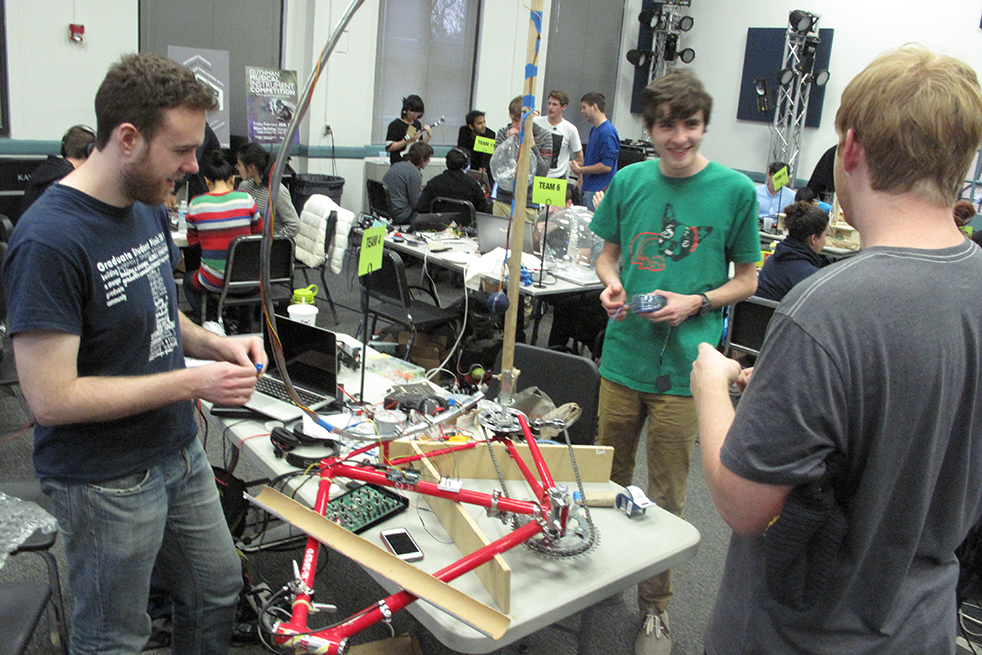On Feb. 20, Tech’s School of Music hosted the 2015 Margaret A. Guthman Musical Instrument Competition. Since 2009, this annual musical competition has graced Tech’s campus with strange and intriguing new instruments, for the competition has not only been a performance as most musical competitions mundanely are, but also has incorporated design; contenders have made their own instruments for their eight-minute performance.
The idea behind this competition is mostly the advancement of the musical arts. Each participant creates a novel instrument and demonstrates the breadth of its musical integrity through their performance, and the finalists are rewarded with a chance to perform before the public at the finale. This year’s finale included many ingenious, if bizarre, entries. Each of the nine finalists were obviously passionate about their creations as well as music in general.
Despite the lackluster announcements in between shows, the night was still enjoyable, and seeing unusual instruments at work was a nice treat. The evening’s musical endeavors started off with PushPull. This instrument and performance was akin to an accordion, but the innovation was centered more on technology. The accordion-like instrument was more flexible and had lights whose colors reflected the mood of the music currently being emitted from the speakers. From here, the competition departed from any known instruments as Johnathan Sparks took the stage with Nomis. His design was reminiscent of an electronic Simon Says game. To the audience’s entertainment, Sparks tapped a rhythm onto a wheel, locked the rhythm in, and then, as it played in the background, added another repeating part to his music.
Each new instrument was stranger than the last, and the audience felt a sense of discovery as a new musician or group of musicians took the stage to show off their invention.
Later in the competition, Bruno Verbrugghe used the same concept as Spark’s Nomis for his Dualo Du-Touch, but instead of a wheel and light towers, his was strapped around his waist, making for a rather strange posture. Invoking memories of a Teletubbies special, Verbrugghe played his instrument with gusto, adding in strange moves that could generously be termed dancing. The audience found this showmanship endearing and applauded him with an enthusiasm equal to his own.
Perhaps the strangest instrument was Edward Potokar’s Magnetic Percussion Tower. This instrument was composed of two tripod towers, taller than Potaker, made of unfinished wood. Each tower had a turntable and as he added magnets and glasses to the turntables, they hit against strings, wires and pendulums, creating a cacophony of tinkering. His performance was a tad frightening as the lofty towers were none too stable, wobbling every time Potaker added or removed an item. Even so, he received a generous round of applause as he switched off the turntables and the tinkling of glasses came to an end.
After the performances where finished, the audience was asked to vote on who should be awarded Best Performance (Johnathan Sparks), Most Unusual Instrument (Magnetic Percussion Tower), and Best Instrument (Nomis) while the judges decided who should win the overall prize. Before the judges decided, but after voting was closed, audience members were encouraged to explore the entries in the Student Design Challenge, an offshoot of the main competition. These instruments were interesting to investigate (one even included most of a bicycle as an integral part of the instrument), and their inventors were eager to explain their workings
In all, the competition was a rather enjoyable concert, showcasing a rarely seen yet all the more interesting part of Tech’s artistic community.
